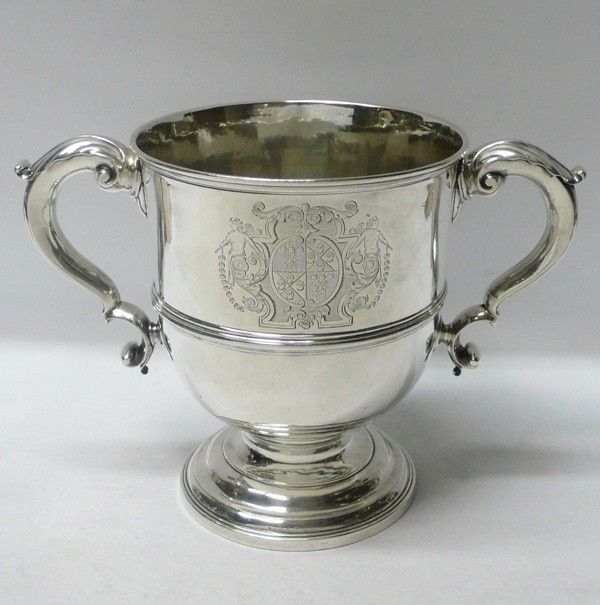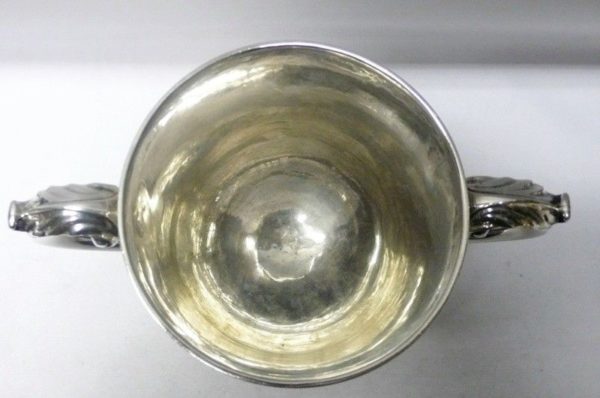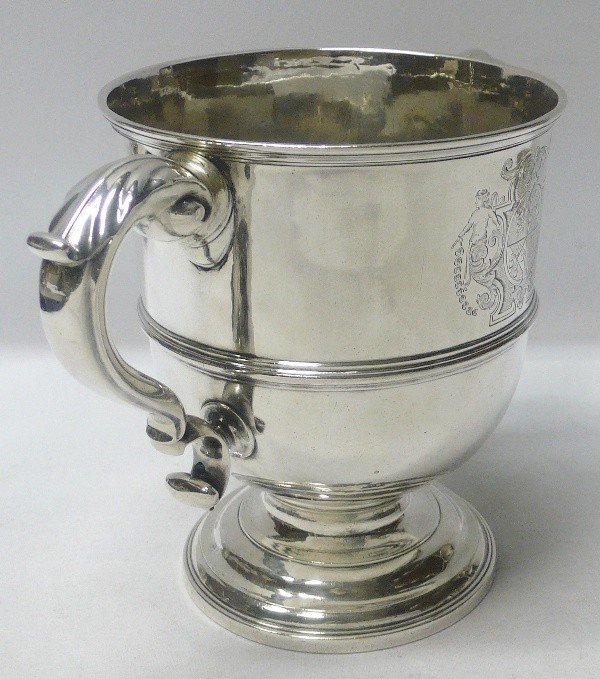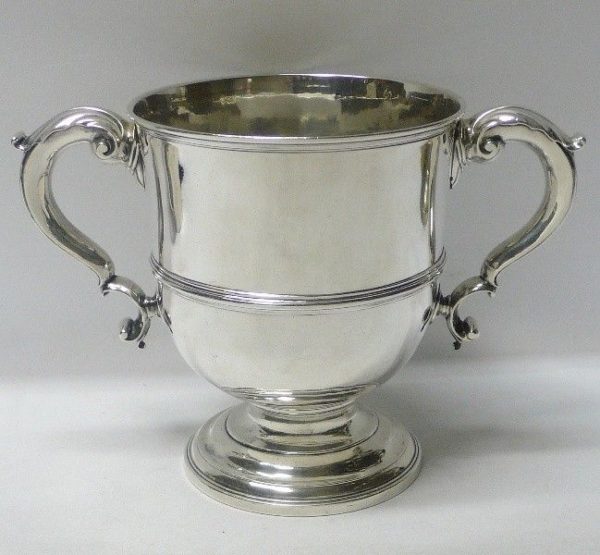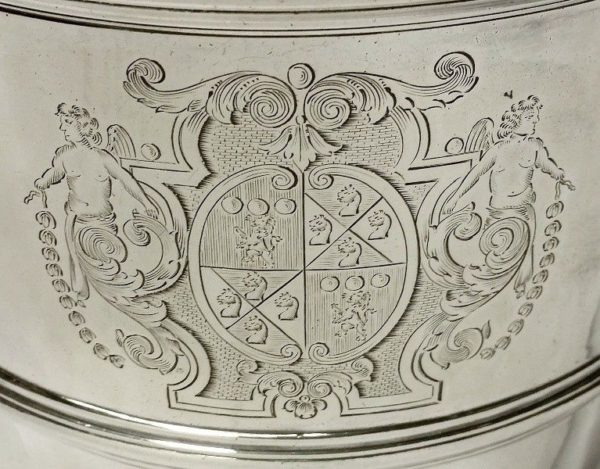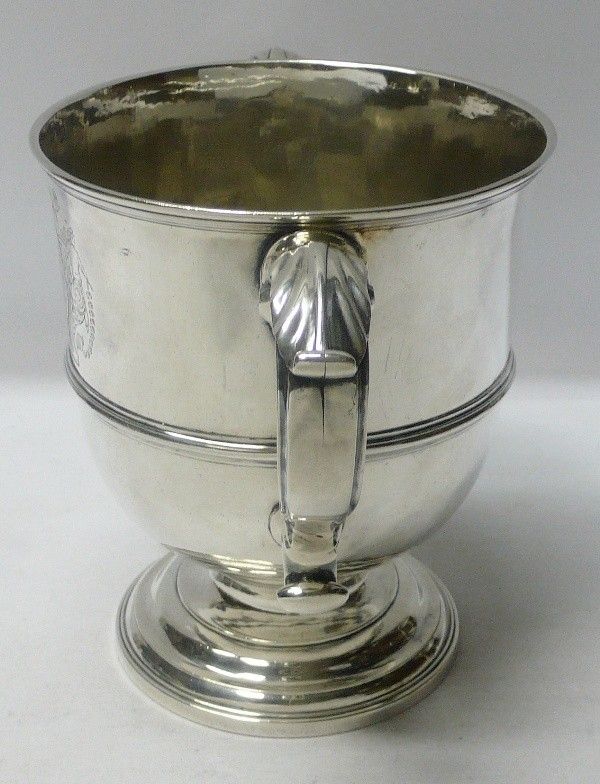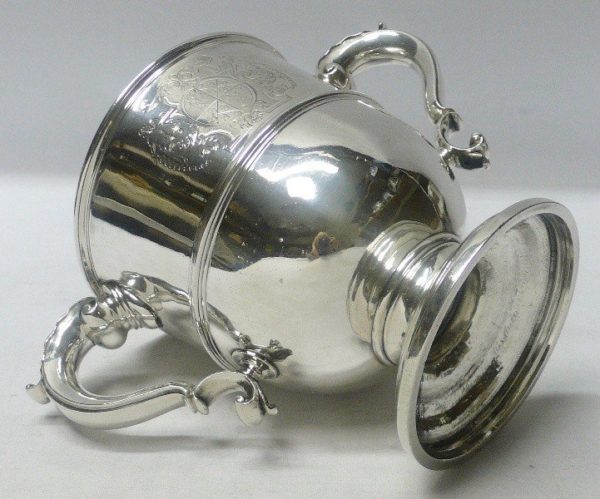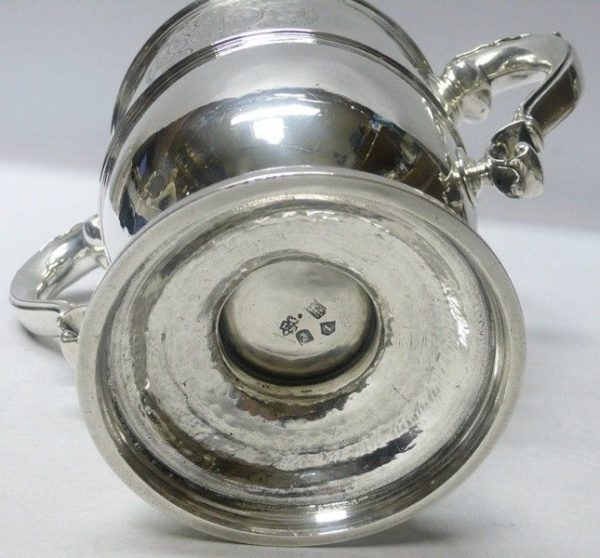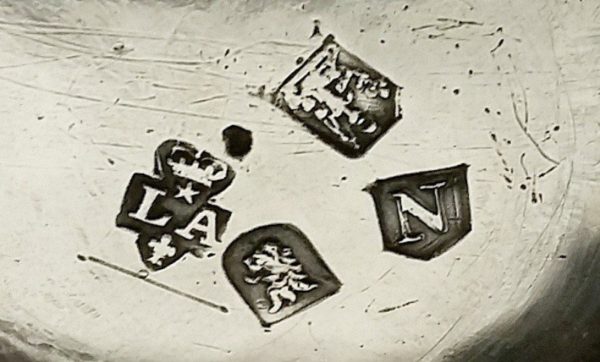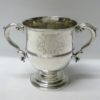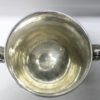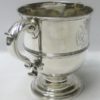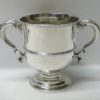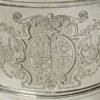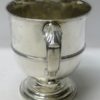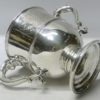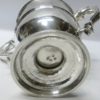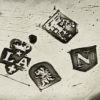George II Silver Cup by Paul de Lamerie
SOLD
Stock: 7911
Date: 1728
Maker: Paul de Lamerie
Country: England
An outstanding early antique silver cup, campana shape with acanthus leaf topped side handles. By the sought after Huguenot silversmith...
Description
Description
An outstanding early antique silver cup, campana shape with acanthus leaf topped side handles. By the sought after Huguenot silversmith Paul de Lamerie. Britannia standard silver*. Lovely plain style and very good weight. Excellent patina. To both sides there is a large and finely engraved armorial crest belonging to TREBY quartering Grange for the Rt Hon George Treby, MP.
Weight 1048 grams, 33.6 troy ounces.
Height 17cs. Diameter of top 14.5cm.
London 1728.
Maker Paul de Lamerie.
Literature: There is a similar cup (with a cover) in the exhibition catalogue, Goldsmiths’ Hall, “Paul De Lamerie at the sign of the Golden ball, an exhibition of England’s master silversmiths (1688 – 1751)”, May – June 1990, page 50. Lent by Her Majesty the Queen. There is another Lamerie cup bearing the Treby arms in the British Museum see link – https://artsandculture.google.com/asset/silver-gilt-cup-and-cover-and-a-sideboard-dish-by-paul-de-lamerie/rgGrGsL-Dh72sw
George Treby (II) (c. 1684 – 1742), was the son of Sir George Treby, an eminent Whig lawyer, politician and Speaker of the House of commons ( 1689 – 92). Educated at Exeter College, Oxford, he followed his father’s footsteps into law, and as M.P. for Plympton Erle. George Treby (II) held other prominent positions in government, before he was turned out of office by Walpole’s fall in February 1742, dying 8th March 1742.
As one of the leading 18th century silversmiths, Paul De Lamerie was gathering important clients; Treby, the Earls of Warrington and many others. George Treby’s early purchases from De Lamerie are fairly modest in their form, however, as Treby grew in status through his political career so did his confidence in his orders from De Lamerie, culminating in the toilet service for his wife, Charity Hele.
*Britannia Standard. In 1696, so extensive had become the melting and clipping of coinage that the silversmiths were forbidden to use the sterling standard for their wares, but had to use a new higher standard, 95.8 per cent. New hallmarks were ordered, “the figure of a woman commonly called Britannia” and the lion’s head erased (torn off at the neck) replacing the lion passant and the leopard’s head crowned. This continued until the old standard of 92.5 per cent was restored in 1720. Britannia standard silver still continues to be produced even today.
Condition
This marvellous silver cup is in very good condition. Good clear silver marks. Superb patina. Crisp engraving – we are told that the arms are later engraved however the style is correct for the period and Treby was a well known early patron of Paul de Lamerie.
Maker Information
Maker: Paul de Lamerie
Paul de Lamerie (9 April 1688–1 August 1751). The Victorian and Albert Museum describes him as the "greatest silversmith working in England in the 18th century". Born in Bois-le-Duc, his French Huguenot family chose to follow William of Orange to England during the Glorious Revolution. In August 1703, de Lamerie became the apprentice to a London goldsmith of Huguenot origin, Pierre Platel (1659-1739). De Lamerie opened his own workshop in 1713 (1st mark "LA" - Britannia mark) and was appointed goldsmith to George I in 1716. 2nd mark 1733 - sterling mark). He worked in partnership with Ellis Gamble - formerly apprentice to Master William Hogarth- between 1723 and 1728. His early work is in the simple Queen Anne style, following classical French models, but de Lamerie is noted for his elaborate rococo style of the 1730s, particularly the richly-decorated works of an unidentified craftsman, the Maynard Master. Leaving his first premises in Great Windmill Street he moved to 40 Gerrard Street in 1738. Here he lived and probably had his shop, his workshops being located in one of the 48 properties he owned in the area. His customers included Tsarinas Anna and Catherine, Count Aleksey, Sir Robert Walpole, Benjamin Mildmay (Earl Fitzwalter and Viscount Harwich), the Earl of Ilchester, the Earl of Thanet, Viscount Tyrconnell, the Duke of Bedford, and other members of the English aristocracy. He also worked for King George V of Portugal. One of his productions to the Portuguese Court was a huge solid silver bath tub lost in the great 1755 Lisbon earthquake. A two-handled silver cup and cover by Paul de Lamerie, dated 1720, was among the wedding gifts of Queen Elizabeth II. Paul de Lamerie ranks as one of the stars of England’s finest period of silver. He was the most prolific silversmith of his time and his fame still lives on today.
Our Guarantee
Customer satisfaction is our primary concern
All silverware on our website is checked thoroughly prior to offering it for sale and every product listing contains a condition report and details of the silver hallmarks.
All items offered on our website include:
- Free Shipping Worldwide
- Tracked and Insured
- 14 day no quibble money back guarantee
- We are accredited members of LAPADA and conform to their strict professional standards
- We dispatch 1-3 days after receiving cleared payments
More detailed information about deliveries, returns and how to pay is available in the Help section at the bottom of this page.
